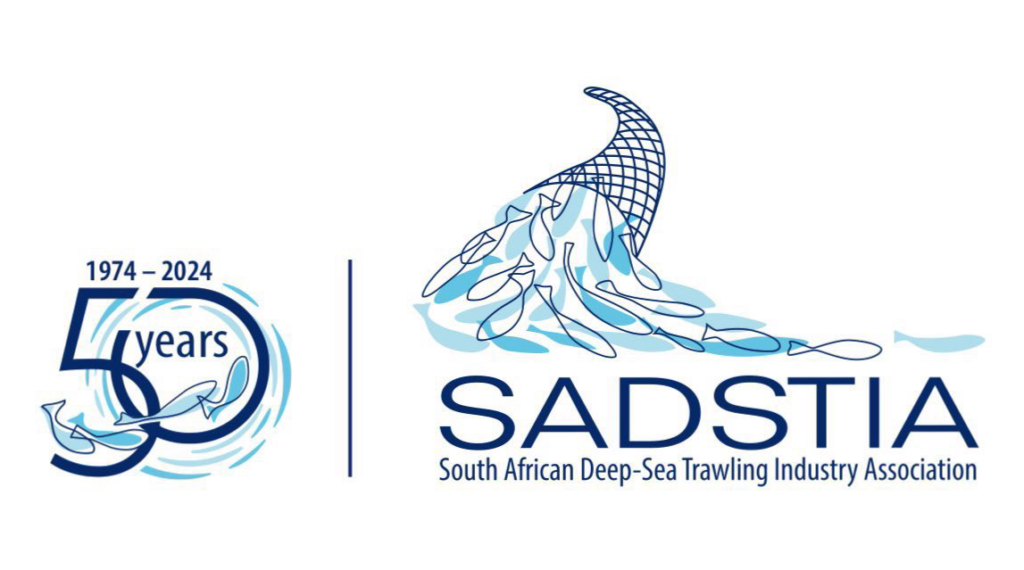The South African Deep-Sea Trawling Industry marks its 50th anniversary this month. Fishing Industry News and Aquaculture Southern Africa sat down with current SADSTIA chairman, Innocent Dwayi, to reflect on the past and talk about the future.

Q: Fifty years after its founding, how representative is SADSTIA?
A: Currently we are working to ensure that all 37 right holders in the deep-sea trawl fishery for hake are members of SADSTIA. Prior to the fishing rights allocation process that concluded last year, only one right holder (out of 33) was not a member of SADSTIA.
Q: The SADSTIA Constitution stipulates that its members shall make every effort to settle disputes on a consensual basis. That can’t be easy?
A: The members of our association are very diverse. Some are small new entrants, whereas others are large, established companies with decades of experience in the hake deep-sea trawl fishery. Many of our members are themselves diversified and hold rights in other fisheries. Some companies supply the local market, usually the food service market, while others are geared towards the export market, supplying it with value-added retail products. Meeting the needs and expectations of small, medium and large members is not easy and at times it seems impossible, but the fact that SADSTIA is celebrating its 50th anniversary is indicative of the strength and depth of the association.
Q: What is SADSTIA’s role?
A: SADSTIA is a registered industrial body. That means the association can represent its members in interactions with government. But over the years it has played a much broader role, working with organised labour, the scientific community, non-governmental organisations and the broader fishing industry for the benefit of its members and the fishing industry as a whole.
Q: How important is the relationship with government?
A: Partnership between government and organised business is essential in South Africa. SADSTIA collaborates with the Department of Forestry, Fisheries and the Environment (DFFE) on a wide range of matters, including the science behind and the management of the hake fisheries. We also liaise with the DFFE on service delivery issues.
Collaboration with government can be powerful. You gain access to the government’s thinking and rationale and at the same time, you bring what you want to achieve as an industry to the table. Currently we’re talking to government about building its research capacity across all sectors and fields, not just the deep-sea trawl fishery. Over 50 years, SADSTIA has found common ground and synergies between government and industry, and we would like to maintain and build our relationship with government, at both the national and provincial level.
Q: How is SADSTIA approaching the government’s stated objective of amending the Marine Living Resources Act?
A: With a positive mindset. We understand the drive for inclusivity and empowerment and we want to make sure that we don’t destroy what we have, but at the same time try to build a more inclusive economy, a more empowering economy for the country. I’m looking forward to dialogues with all social partners involved in the process: organised labour, organised business, society, and of course the fishing industry to make sure that the amendments talk to what the country wants to do. We want to create jobs. We don’t want to destroy any jobs. We want to make sure that we strengthen what we have. We don’t want to destroy what is working, but like I say, we welcome the discussion and the dialogues.
Q: The Marine Stewardship Council certification has become more and more important to the success of the deep-sea trawl fishery. How does the fishery retain its certification in the light of diminished capacity from government?
A: We cannot achieve MSC certification without government. Our fishery is audited annually by the MSC and we absolutely depend on government scientists and compliance officials to document the work they do so that we can demonstrate our fishery’s sustainability. And we are highly appreciative of the effort that DFFE puts into the annual audits. SADSTIA has never shied away from leading and pioneering when it comes to the sustainability of our country’s hake stocks and the association will continue to partner with the MSC and government to make sure that the stocks are healthy and sustainable.
Q: How big a threat is climate change to the hake deep-sea trawl fishery?
A: No one seems to know. Everyone wants to find the answers. Our scientists are working day and night to understand the changing weather patterns and so many other things. I’m not a scientist, but I know that we’ve recently experienced a decline in catch rates and this could be related to the changes that are taking place because of climate change. One good thing is that our government, Minister Creecy in particular, is involved in global dialogues on climate change and the need to move from fossil fuels to cleaner sources of energy.
Q: On that subject, the carbon footprint of the fishing industry is significant because it depends on fossil fuels. Is addressing the fishery’s carbon footprint on SADSTIA’s agenda?
A: It is on our agenda. It is on our government’s agenda. We welcome any discussion to improve the environment, to improve the way we do business. Already, we monitor our vessels constantly to improve efficiencies. There are times when you have look at the weather conditions and catch conditions and make decisions to make sure you don’t burn too much fuel. That makes business sense. If we need to move to alternative fuels, of course our members will welcome that, but they will want to ensure that there’s continuity, there is no disruption to their operations.
Q: Are there any other threats to the sustainability of the deep-sea trawl fishery?
A: Marine mining is a threat. We’ve all seen the increase in prospecting for oil and gas that is taking place in South African waters. We have seen in other parts of Africa that marine mining destroys jobs on land. We also know that jobs in the ocean have a multiplier effect, there are jobs throughout the value chain. If you start marine mining without a proper analysis of how that is going to translate socially and economically, you may actually destroy jobs, even lives. Marine mining could destroy jobs, it could destroy the entire industry. It is a real threat to our industry.
Q: SADSTIA has represented the interests of South African trawler owners and operators for five decades. What are some of the immediate tasks of the Association?
A: Our fishery has just received long-term rights. Currently, about 93% of right holders are members of SADSTIA (34 out of 37 right holders). We want to make that 100%. We’re trying hard to make SADSTIA an inclusive association. In the past there were perceptions that SADSTIA is an association for bigger companies, but if you look at the current executive committee, you will see that small, medium and big businesses are represented. We want to make sure that we build SADSTIA into a strong association which will cater for all the sizes and types of businesses in the hake deep-sea trawl fishery. More broadly, SADSTIA is a member of FishSA and through that association, it is a member of Business Unity South Africa (BUSA) which plays a massive role in the economy. SADSTIA wants very much to retain a seat at the BUSA table so that we can make sure we protect our interests and also contribute to what the country wants to achieve for the next five years, ten years and indeed, the next 50 years.
The constitution of the South African Deep-Sea Trawling Industry Association, SADSTIA, was adopted on 24 March 1974. At the time, the future of South Africa’s deep-sea trawl fishery for hake hung in the balance: hundreds of trawlers from Russia, Spain, Japan, Poland, Bulgaria, Romania and the former East Germany were fishing for hake and other stocks in the Southeast Atlantic, with no effective monitoring or control. Only 15% of the hake caught in the region was landed by South African trawlers. Following the declaration of South Africa’s exclusive economic zone in 1977, SADSTIA played a key role in rebuilding the hake stocks and since the mid-1980s the association has worked hard to safeguard their management. The result is a fishery that is globally admired and locally valued as a jewel in the crown of the South African fishing industry.





















Comments are closed.